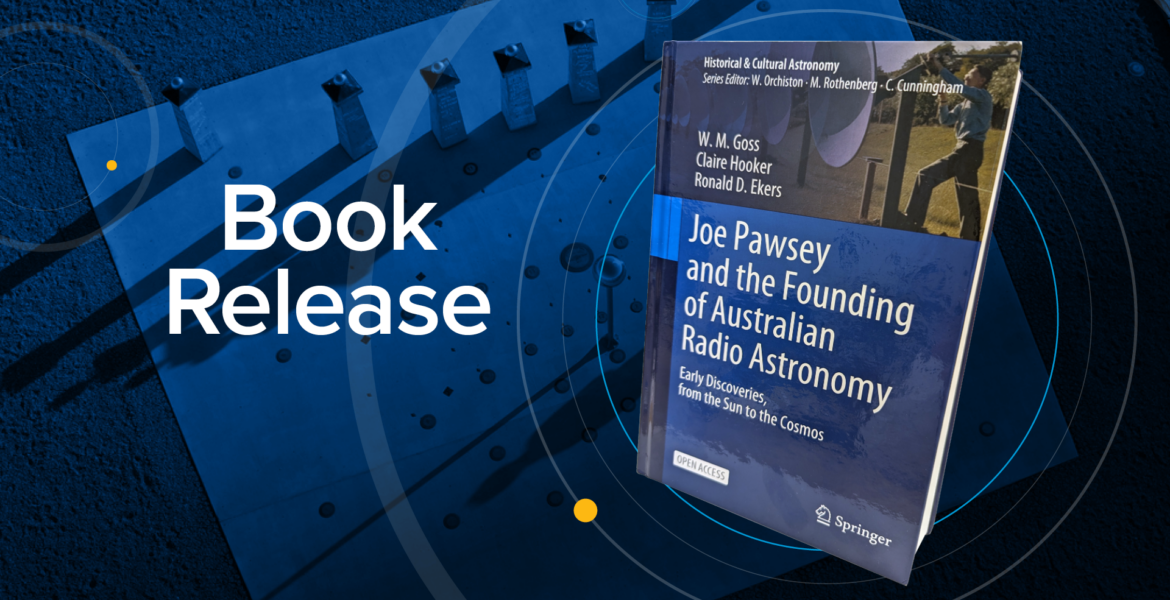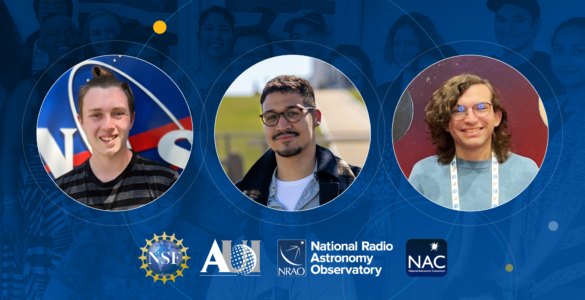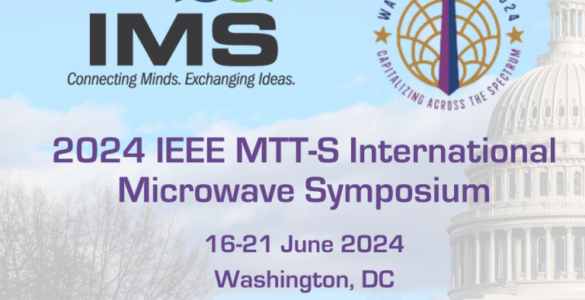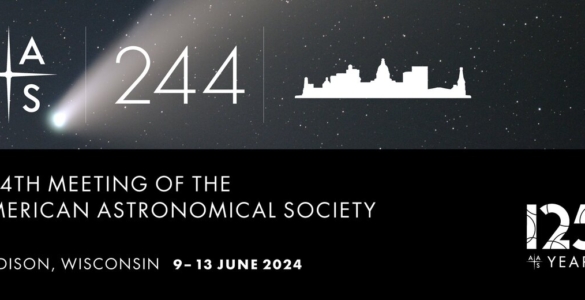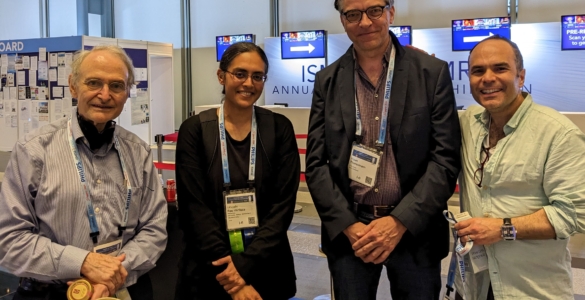An event will be held onsite at the National Radio Astronomy Observatory (NRAO) Dominici Science Operations Center in Socorro, New Mexico and at the Very Large Array (VLA) next week to celebrate the release of the new book, “Joe Pawsey and the Founding of Australian Radio Astronomy: Early Discoveries, from the Sun to the Cosmos” by W.M. Goss (National Radio Astronomy Observatory, Socorro, New Mexico), Claire Hooker (Health and Medical Humanities, Sydney Health Ethics, Sydney, Australia) and Ronald D. Ekers (Commonwealth Scientific and Industrial Research Organization, Space and Astronomy, Sydney, Australia). This book was more than 15 years in the making, and it is a collaboration of three authors across two continents who worked together to bring to light the story of Joe Pawsey, a key figure in Australian science and, especially, radio astronomy.
The book is an innovative biography of Joe Pawsey, where the biographical structure is used to reexamine the early years of radio astronomy research, as the field emerged from radar research after WWII. Goss, Hooker and Ekers explore the scientific and social context in which Pawsey forged a career that culminated in his leading the first radio astronomy research group in Australia, one of only three worldwide. The authors are interested in different perspectives and include analysis of personalities and motivations to their discussion of how radio astronomy transformed understanding of the universe.
The authors emphasize Pawsey’s groundbreaking research, particularly his work on solar radio astronomy. Pawsey’s experiments in the 1940s led to the discovery of the association of solar radio bursts with sunspots, which revolutionized our understanding of the Sun’s activity. His innovative use of the interference between radio waves to study celestial objects laid the foundation for future development of the interferometer arrays such as the Very Large Array (VLA).
Pawsey’s vision and determination led to the establishment of the radio astronomy group of the Radiophysics Laboratory at CSIR, now CSIRO – Australia’s national science agency, in Sydney, Australia. This group became a hub for radio astronomy research, attracting scientists from around the world. Pawsey’s leadership and collaborative approach fostered an environment of innovation, resulting in numerous significant discoveries.
One of Pawsey’s most notable contributions was his participation in the Parkes Radio Observatory (opened in 1961) under the leadership of E.G. Bowen. Bowen provided the entrepreneurial role while Pawsey provided the scientific inspiration with major contributions to the design and future science program of this ground-breaking instrument. The 64-meter Parkes radio telescope, Murriyang, has produced major scientific discoveries in the intervening six decades.
“Joe Pawsey and the Founding of Australian Radio Astronomy” by Goss, Hooker and Ekers provides a comprehensive account of Joe Pawsey’s remarkable journey and his significant contributions to the field of radio astronomy. This book serves as a testament to Pawsey’s enduring legacy and his invaluable contributions to our understanding of the universe. W.M. Goss stated, “Pawsey’s influence on astronomy has now persisted over six decades well into the 21th century. If I might modify Issac Newton’s statement to Robert Hook in 1675: ‘If I have seen further it is by standing on the shoulders of Pawsey, the original Giant’.”
On the 28th July 2023, an Australian book launch was held at the Pawsey Supercomputing Research Centre in Perth. An Australian supercomputing centre, named after Joe Pawsey, which now plays a key role in the phenomenal success of the aperture synthesis radio astronomy imaging technique, a technique which was invented by Pawsey’s group and is now used throughout the world, including the Very Large Array (VLA). It will be key to the success of future telescopes such as the Next Generation VLA and the Square Kilometre Array (SKA).
“This open access book examines not only the life of a radio astronomy pioneer, but also the birth and growth of the field of radio astronomy and the state of science itself in twentieth century Australia. The book explains how an isolated continent with limited resources grew to be one of the international leaders in the study of radio astronomy and the design of instruments to do so,” Ronald Ekers.
If you would like to read “Joe Pawsey and the Founding of Australian Radio Astronomy” by Claire Hooker, Ronald D. Ekers, and W. M. Goss you can access a digital copy of the open access book here. You can also purchase a hardback or soft cover version at the Springer web site ( https://link.springer.com with keyword “pawsey”)


